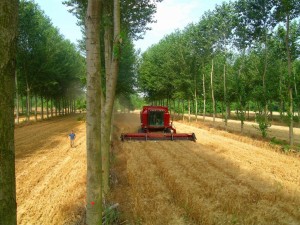“We are looking at a revolution,” declared Dennis Garrity, UNCCD Drylands Ambassador and Chair of the EverGreen Agriculture Partnership, at the 14th World Forestry Congress in Durban. Opening a World Café on trees and resilience he said, “The agriculture that we see today will be transformed into one where trees are integrated into every agricultural system.”
Agriculturalists are increasingly recognizing that incorporating trees and shrubs directly into croplands can dramatically increase productivity, income and the resilience of farming systems. African farmers are showing the way to successfully integrate trees into croplands, using African species like Faidherbia and Gliricidia, as trees and bushes, to increase crop yields, raise soil fertility, conserve water and feed animals.
The most outstanding example of this use of trees is in the Sahel, where 5 million hectares of desertified land has been brought back under cultivation by farmers nurturing the trees that sprouted spontaneously from the soil. Once trees in the landscape were freed of government regulation, this practice spread quickly across the whole Sahel, with astonishing results. Some areas are showing up to a 400 percent increase in maize yield, with no other input than the nitrogen released by the trees.
And the revolution is spreading. In Europe, French farmers are profitably interplanting walnuts and other high-value trees with cereals because the European Union has reversed its policy and it is now encouraging the growing of trees on cropland. Farmers in the corn belt of the United States are also starting to integrate trees into their fields, using high-value species in alleys, which also function as windbreaks on prairie lands. Elsewhere, US farmers are integrating forages, annual crops and tree crops, mimicking the original agriculture, rather than the artificial monocrops of corn and soya beans. Grasslands are also being found to be more productive with trees on them, as well as regenerating more rapidly.





